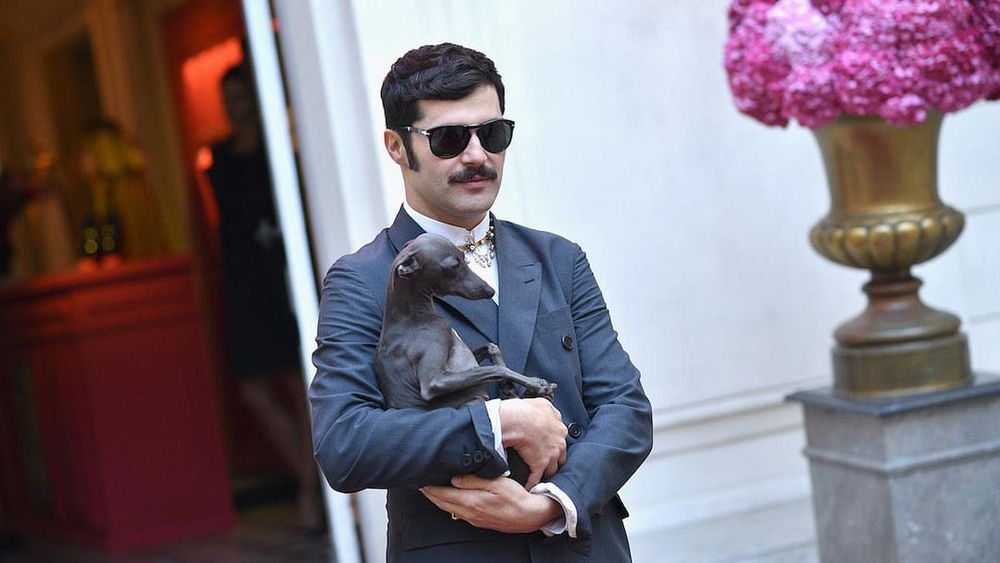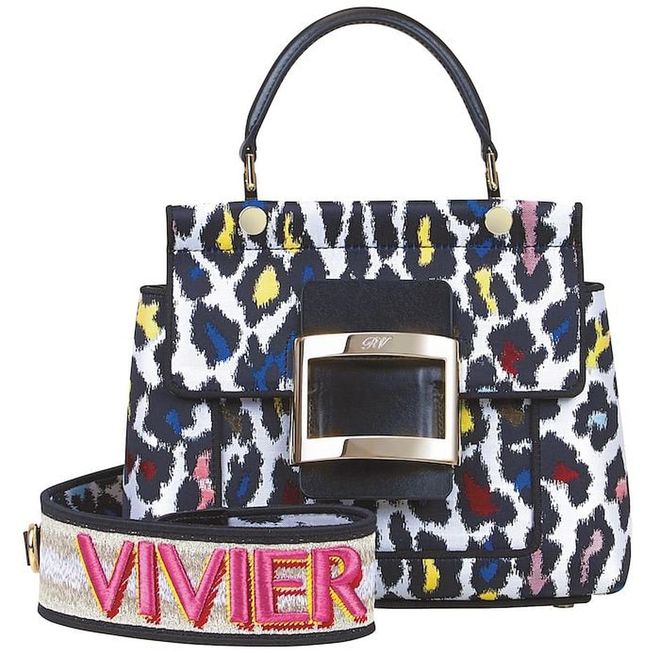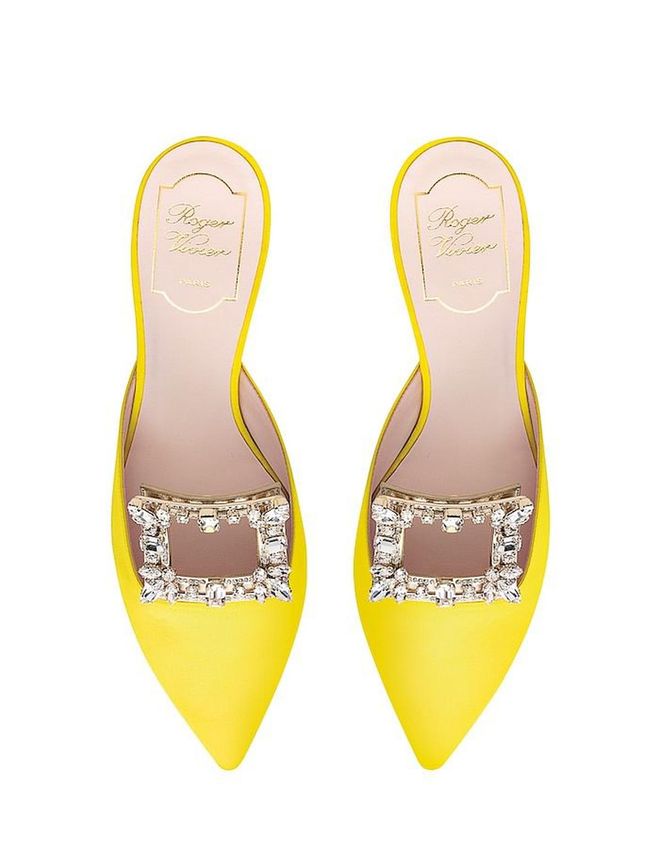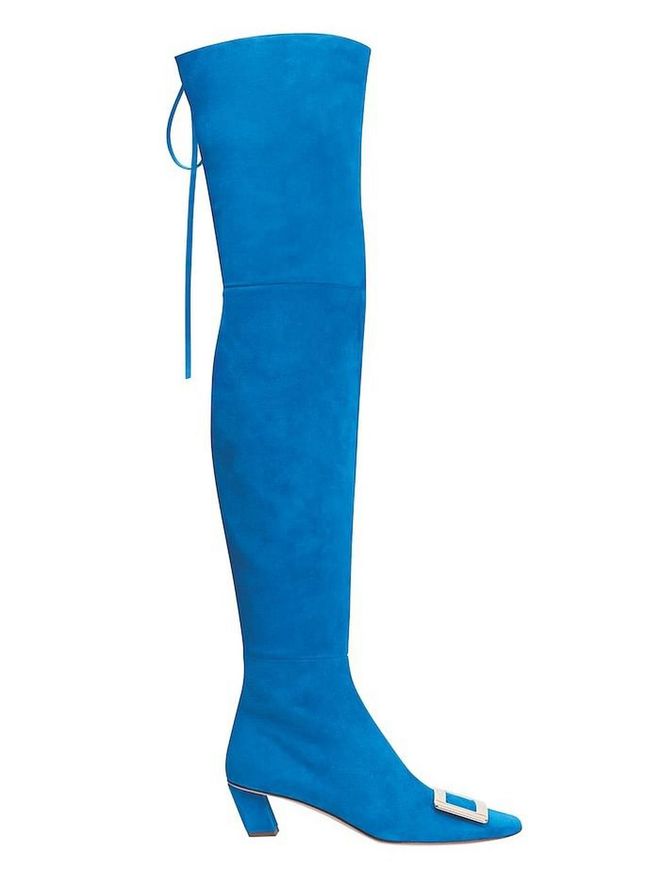Interview With Gherardo Felloni, Creative Director Of Roger Vivier


Gherardo Felloni (Photo: Roger Vivier)
Fom the moment Catherine Deneuve sauntered onto the screen as Séverine Serizy in Luis Bunuel’s 1967 movie Belle de Jour, she wrote the blueprint for coquettish French chic. A huge part of the allure came from the impeccable wardrobe—clothes by Yves Saint Laurent and shoes by Roger Vivier. In a tribute to the favourite cult film, the footwear maestro named those shoes the Belle Vivier. Its blockish shape and graphic buckle symbolised the spirit of the ’60s, and the latter has remained a House icon ever since.
Throughout his entire career, screen legends and the world’s biggest names alike turned to Vivier when they needed an extra helping of glamour. The shoemaker shod women the likes of Jacqueline Kennedy, Queen Elizabeth, Marlene Dietrich and Elizabeth Taylor. The inventor of the stiletto and the comma heel also collaborated with fashion’s most brilliant minds: He helped define mid-century fashion alongside Christian Dior and worked with Yves Saint Laurent on some of his most legendary collections, including his Mondrian masterpiece. It is the geometric Belle Vivier buckle, though, that has become one of Vivier’s most enduring legacies—a calling card and visual shorthand and for the brand as well as an unfading symbol of taste, refinement and a certain kind of understated Parisian chic.
Related article: Add A Touch Of Whimsy To Any Outfit With Roger Vivier’s ‘Funny Love’ Creations

Printed leather bag (Photo: Roger Vivier)
Since his appointment in 2018 as the House’s creative director, Gherardo Felloni has brought an exciting new energy to both the buckle and the brand. Juggling his respect for the House codes with his own maximalist sensibilities, Felloni has injected a new-again opulence into the Roger Vivier design vocabulary with precious jewel-like details and exuberant colours. He is also a resolute 21st-century designer and his work is thus rooted in modernity. It was Felloni who introduced sneakers to the brand—and the Viv’ Run series has since gone on to become a bestseller. Here, Felloni tells all about balancing heritage and modernity, and what drives him as a designer.
Related article: Style Stars: Which Designer Shares Your Zodiac Personality Traits?
When did you first realise the power and allure of a beautiful shoe?
It was natural for me. I come from Tuscany, from a small town where my family owns an atelier for luxury shoes. There, I learnt all the details and technical knowledge about shoe design from my father and uncle.
What kind of fashion, art, film and music were you exposed to growing up and how did that inform your aesthetic today?
I’ve always been very passionate about the arts, be it film, music or architecture. Inspiration comes from everything. I’m particularly inspired by antique jewels, which I collect. Architecture books inspire me for shapes. I’m inspired by actresses and cinema, as you can see with the mini films that we produce, such as Abracashoes, starring Christina Ricci, Jewels to Shoes, starring Susan Sarandon, and of course, Duo des Chats, with Catherine Deneuve.
Related article:
Your presentations and campaigns do have a very cinematic quality. Who are your favourite directors and what are your favourite films?
I’m a fan of Tim Burton and the way fantasy comes alive in his films. I also love the movie Death Becomes Her, starring Meryl Streep and Goldie Hawn—I can watch it over and over again!
Tell us more about your collection of antique jewellery.
I collect mostly 19th-century pieces from France and Italy. I love antique jewellery because it’s unique. It’s something that’s part of my personal lifestyle that inspires me, and it’s always present when I design the embellishment and embroidery in my creations.
What else do you collect?
I have an art collection with works by Nicolas Party, Victor Vasarely and Enrico Castellani, among others.
How did growing up in Italy influence your approach to beauty and creativity?
I grew up in an environment that encouraged creativity. I always did chores for my family’s atelier in summer and when I graduated, my father told me that he was looking for an intern to design shoes. So, at a very young age, I was already exposed to this world, and developed an appreciation for artistry and craftsmanship.

Satin mules (Photo: Roger Vivier)
Related article: These Singaporean Fashion Collectives Are Rewriting the Rules
You worked with Helmut Lang, Miuccia Prada and John Galliano before joining Roger Vivier. What was the biggest lesson you learnt from these experiences?
Working with the big Maisons of prêt-à- porter and haute couture, I learnt about the importance of shoes to complete the silhouette—they’re fundamental.
When you started out designing footwear, what did the name Roger Vivier mean to you?
Roger Vivier has always been a reference among designers and his heel inventions were ahead of his time. When I was appointed Creative Director of the Maison, I was very excited to finally study the archives up-close, and not just see them in books and on the internet.

Suede boot (Photo: Roger Vivier)
How important are the archives to your design process?
The archives play an important part because Roger Vivier has such a rich heritage. My challenge is to take this heritage and make it contemporary—fit for the modern Vivier woman.
Related article: GINLEE Studio Embraces Slow Fashion With Its Latest Order-On-Demand Initiative
How do you take a heritage brand and make it modern and fun How do you decide what to keep and what to evolve?
Roger Vivier is a Maison with a rich heritage and the challenge for me when I create a collection is to strike a balance between making sure that the codes of the Maison are present and designing pieces that will appeal to contemporary women today.
What’s your design process like? What informs your mood and vision at the start of each season?
I think a good designer achieves the balance between creativity and reality. At the same time, he also has to be attentive to the world around him. True to the Roger Vivier aesthetic, my design process and style are certainly not minimalist. I like rich designs, embellishments and embroideries. I love colour, I’m very eclectic and I love mixing different styles in my designs.
Related article: Step Inside Daniel Roseberry's Schiaparelli Atelier
The buckle was created 55 years ago—how do you make it speak to a modern audience?
The buckle is the eternal signature of Roger Vivier, so it’s always a source of inspiration and a challenge to reimagine every season. Monsieur Vivier himself created different kinds of buckles in different materials. When I became Creative Director for Roger Vivier, I decided to reinterpret the buckle. I made it bigger and more squarish to give it a younger and more casual look.
During the global lockdowns due to the Covid-19 pandemic, what did you learn or realise?
The pandemic definitely changed my perspective on creativity. I think now, we all have to look closer to find creativity and inspiration—we look in our homes, in films or in books. But for sure, there’ll never be a lack of inspiration as there’ll always be fantasy.
Related article: 10 Designers Who Have Costumed Films: From Coco Chanel To Raf Simons
It has been predicted that shopping habits will shift considerably post-pandemic. How do you think fashion companies and creative directors should evolve in response to these shifts?
The situation has already changed the industry. Quality will play a bigger role in what people will purchase and luxury brands have to answer to this need. The main point is to pay attention to the craft and to the passionate people who develop these trades.